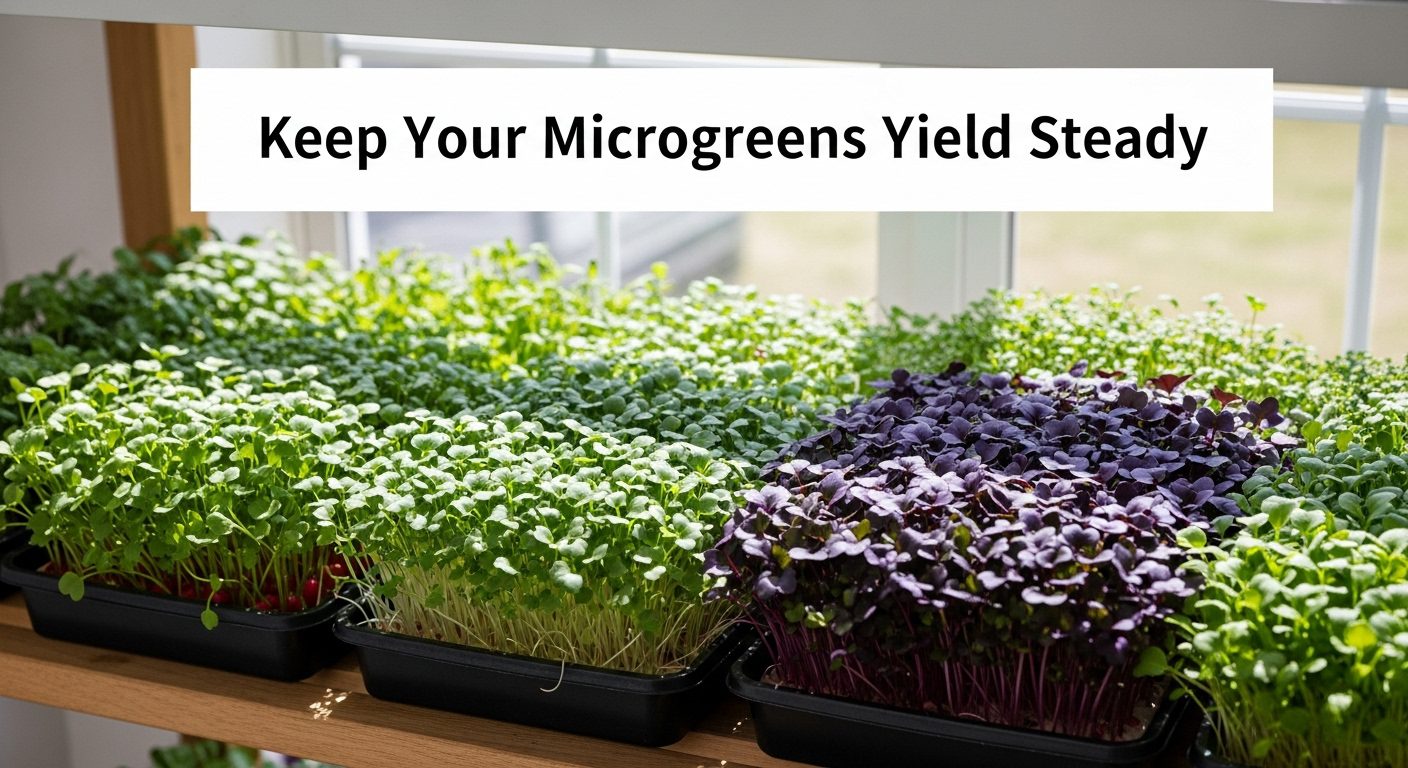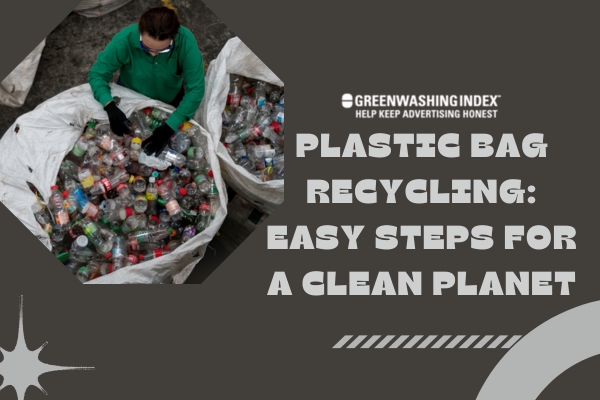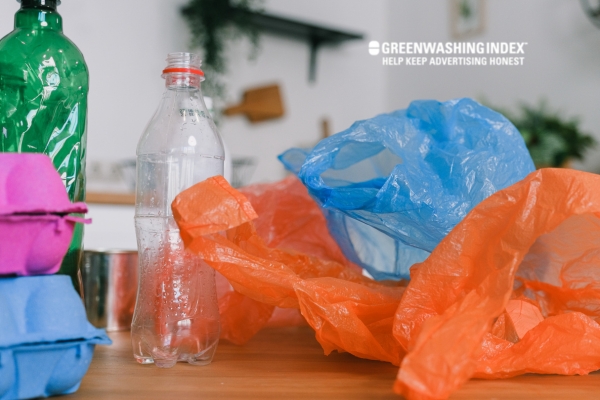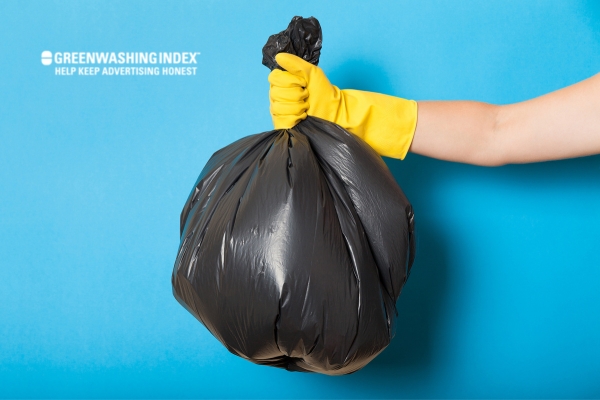

When it comes to taking care of our precious Earth, every little action counts and this includes how we manage the common plastic bag. Have you ever wondered about plastic bag recycling and how it can make a difference?
The answer might surprise you! It’s not just about tossing them into a bin – there’s a whole world behind those crinkly plastic wonders waiting to be explored, and I’m here to guide you through it!
Handling plastic bags the right way can be confusing. Can they really be recycled? The straightforward response is yes, with the right know-how.
As simple as using your regular recycling bin may seem, most curbside programs won’t accept them. Instead, these bags need special attention. Drop-off locations at grocery stores or recycling centers are typically set up just for them. Once collected, they’re whisked away to facilities where they’re given new life as different products.
What You’ll Discover Here:
When we talk about plastic bag recycling, it’s important to know what exactly this means. So, what is plastic bag recycling? It’s a way of turning used plastic bags into useful things instead of throwing them away.

When we reuse these bags or make new things from them, that is what we call “plastic bag recycling.” It might sound simple, but it’s a big deal because it helps our planet in many ways.
You’ve seen plastic bags, right? They’re those thin bags you get at grocery stores or shops. But once you’re done with them, where do they go? Usually, in the trash – and that’s the problem. They can actually be recycled – which means they’re turned back into something good again instead of hurting the earth.
Plastic bag recycling takes these old bags and changes them so we can make new products from them. This could be decking for your garden, benches for parks, or even more plastic bags! This process keeps the bags out of landfills and oceans, where they can do a lot of harm.
Why is this important? Because there are billions of plastic bags being used every year! That’s why I think everyone should know about how to recycle these little guys.
It’s also a step towards sustainable living – which just means living in a way that doesn’t waste resources and looks after our world. Eco-friendly practices like recycling are ways to protect nature and reduce pollution.
Let me share something really serious here: if we don’t recycle plastic bags properly, they hurt nature – badly. Here’s how: when left out there in the open land or waterways, these lightweight pesky pieces float around easily because they’re so light.
Animals sometimes mistake them for food and eat them. Not good at all! This can make animals sick or even cause their deaths. Plus, as these plastics break down over hundreds of years—yes, years—they release harmful chemicals into soil and water channels, too!
To give you an idea of how much impact this has, imagine millions upon millions over many years… You get it; it’s huge!
Remember when I said eco-friendly practices? Not letting your old shopping bag become part of this problem is one good step towards earth-kind habits.
Now that you know why this process matters so deeply for our environment, let’s all try our best to keep up our eco-friendly habits, such as proper plastic bag recycling!
Also Read: Mattress Disposal: Easy Steps for Eco-Friendly Solutions
Recycling plastic bags is a key part of living sustainably and taking care of our Earth. I want to make plastic bag recycling easy for everyone, so let’s go through the steps together.

Before diving into how to recycle plastic bags, it’s important that they are clean and sorted correctly. This might sound hard, but trust me, with these basic steps, anyone can do it.
By following these simple sorting and cleaning rules, we make sure our old plastic bags are ready for a new life!
Now that we’ve got our cleaned and sorted piles of rolled-up plastic bags, we need to find where they should go next! Fortunately, finding a “plastic bag recycling” center near us isn’t too tough if we know what methods to use:
Remember: Always call ahead if possible to confirm that your chosen spot definitely takes used plastics – this saves time and effort!
By going step-by-step through sorting/cleaning your used plastics correctly, then finding where they get recycled locally… Congrats! You’re owning this whole “sustainable living” thing!
Let’s keep those efforts rolling – Mother Nature thanks us all every time we do right by her with eco-friendly practices like effective plastic bag recycling!
Also Read: Styrofoam Disposal: Easy Ways to Reduce Environmental Impact
When it comes to plastic bag recycling, there’s a lot of confusion out there. I want to set the record straight and talk about what’s true and what’s not. It’s important because knowing the facts helps us do better when we recycle and live more eco-friendly lives.
First, a big myth is that you can recycle all plastic bags. But that is not quite right. You see, not every plastic bag can go into your regular recycling bin at home. The thin grocery bags? Those need special care. They can easily mess up the machines at recycling centers if they are not handled properly.
Second, some people might tell you that thicker plastic bags, maybe ones from a clothing store, are okay to toss into your home recycling bin. This could be true in some places, but it’s often wrong, too! Every area has its own rules for recycling, so it’s best to check with local services.
So let me list out some clear points:
Remember these tips next time you’re handling plastic bags at home! Knowing this can help us keep up with eco-friendly practices and support sustainable living in small yet significant ways.
Recycling methods differ everywhere – when we get them right by staying informed – we make sure our efforts aren’t wasted (pun intended).
Also Read: Computer Recycling: Green Guide to Old Tech Disposal
When we talk about plastic bag recycling, we need to know that not all plastic bags are made the same way. Some can be recycled; others cannot. Let me tell you about the types that you usually can recycle.

First off, there are two main types of recyclable plastic bags based on the material they are made from:
Now, let’s go into detail about how to spot these materials and what those numbers and symbols mean.
Most recyclable plastic bags have a small triangle with arrows – that’s called the “recycle symbol.” Inside this triangle, there’s a number. That number is super important because it tells you what type of plastic you’re holding in your hand.
Here is what to look for:
Once you’ve located this symbol and identified the number, congrats! You now know if your bag is one of those meant for plastic bag recycling.
Keep in mind:
Understanding these symbols makes us smarter in our eco-friendly practices as we pursue sustainable living. It’s these little steps toward proper recycling methods that make a big difference for our planet!
Remember, when in doubt, check for numbers 2 or 4 before tossing into recycling – this simple step keeps plastic bags within the realm of being helpful instead of harmful to our environment.
Also Read: Greenhouse Gardening: Your Ultimate Guide to Aquaponics
Recycling plastic bags is important for keeping our planet clean and healthy. You might be wondering, “Where can I recycle my plastic bags?” Let me tell you about some places where you can take them.
Most of us go to the grocery store at least once a week. You may have noticed special bins near the entrance or exit of these stores. These bins are often marked for plastic bag recycling. They’re there so you can drop off your plastic bags instead of throwing them away.
Besides grocery stores, some big retail shops also have these recycling containers just inside their doors. Before you go shopping, simply gather your used plastic bags from home and take them with you to drop them off.
Another place to look for recycling methods for your plastic bags is at local community recycling centers or drop-off points. Some communities provide special spots where residents can bring various recyclable materials, including plastic bags.
If you’re not sure about locations in your area, here’s what you can do:
Remember, an essential part of eco-friendly practices is making sure that the plastic bags are clean and dry before dropping them off. This helps in easier and more effective plastic bag recycling.
By finding these places and regularly taking our old bags there, we play an important role in sustainable living. It helps reduce waste and keeps our environment cleaner.
Also Read: Composting Bread: Unveiling the Truth About Bread Waste
I love finding new ways to use things, and plastic bags offer a world of possibilities! Before I jump into “plastic bag recycling,” I like to think about how I can give them a second life. Let me share some innovative reuses for plastic bags that might just inspire you.

Plastic bags are so much more than just something to carry stuff in. With a bit of imagination, they can become part of my craft projects or handy DIY solutions around my home.
Remembering these creative ideas makes “plastic bag recycling” not only an eco-friendly practice but also an enjoyable exercise in sustainable living!
Also Read: The Power of Bifacial Solar Panels: A Comprehensive Guide
When I think about plastic bag recycling, I believe there’s power in working together. That’s why community initiatives are so important. They bring people together to work toward a common goal of sustainable living and eco-friendly practices.
I’ve seen the benefits of being part of local efforts focused on recycling methods for plastic bags. One powerful step is to encourage involvement in community-driven programs dedicated to minimizing waste.
Here’s how we can do that:
By engaging with community initiatives for plastic bag recycling, we contribute to efforts much bigger than ourselves—it’s all about neighbors coming together for our planet’s future!
It’s clear that plastic bag recycling is an essential piece of the puzzle when it comes to caring for our planet. By understanding the process and getting involved, we can each make a significant impact.
Simple acts of sorting, cleaning, and correct disposal can prevent harm to ecosystems and promote sustainable living. Engaging in eco-friendly practices isn’t just good for the earth; it feels good, too, knowing we are part of a bigger movement toward a cleaner environment.
Key Takeaway Points
